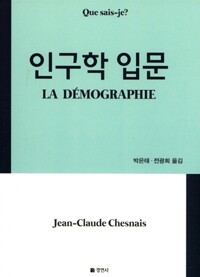
Demographic developments in China
- 발행사항
- Abingdon, Oxon ; New York, NY : Routledge, Taylor & Francis Group, 2014
- 형태사항
- xxiii, 250 p. : illustrations ; 24 cm
- ISBN
- 9781138481572
- 청구기호
- 331.3 C539d
- 서지주기
- Includes bibliographical references (pages 230-241) and index
소장정보
| 위치 | 등록번호 | 청구기호 / 출력 | 상태 | 반납예정일 |
|---|---|---|---|---|
이용 가능 (1) | ||||
| 1자료실 | 00018120 | 대출가능 | - | |
- 등록번호
- 00018120
- 상태/반납예정일
- 대출가능
- -
- 위치/청구기호(출력)
- 1자료실
책 소개
This book assesses current developments in China’s demography, and discusses the changes which should be implemented to bring policy into line with the current demographic situation. It argues that population planning, which was introduced in the early years of the People’s Republic alongside economic planning, including "the one child policy", is no longer appropriate. It considers the results of the 2010 census, which showed the very significant shifts that are occurring , including a declining rate of population growth, ongoing growth of the number of people in "the floating population", an increasingly imbalanced sex ratio among newborn children, and ongoing ageing of the population. Besides discussing population planning policy, the book also examines how policies in the fields of education, health, gender relations, child development in rural areas, and polices for the elderly and families should be adjusted to accommodate demographic developments.
This book assesses current developments in China's demography, and discusses the changes which should be implemented to bring policy into line with the current demographic situation. It argues that population planning, which was introduced in the early years of the People’s Republic alongside economic planning, including "the one child policy", is no longer appropriate. Besides discussing population planning policy, the book also examines how policies in the fields of education, health, gender relations, child development in rural areas, and polices for the elderly should be adjusted to accommodate demographic developments.
목차
Introduction 1. The Chinese Population at a Historic Turning Point 2.Socioeconomic Development as a Determinant of Demographic Transitions 3.Socioeconomic Impacts of Demographic Transition4. A Steady Approach to Adjusting the Family Planning Policy5. Investing in Health 6.Improving Education7. Child Development in Rural Areas8. An Overall Planning Approach to the Issue of Population Mobility in the Development of Urban and Rural Areas 9.Promoting Gender Equality 10.Stimulating Development Potential in an Aging Society 11. Capacity Building for Family Development 12.Policy Proposals





